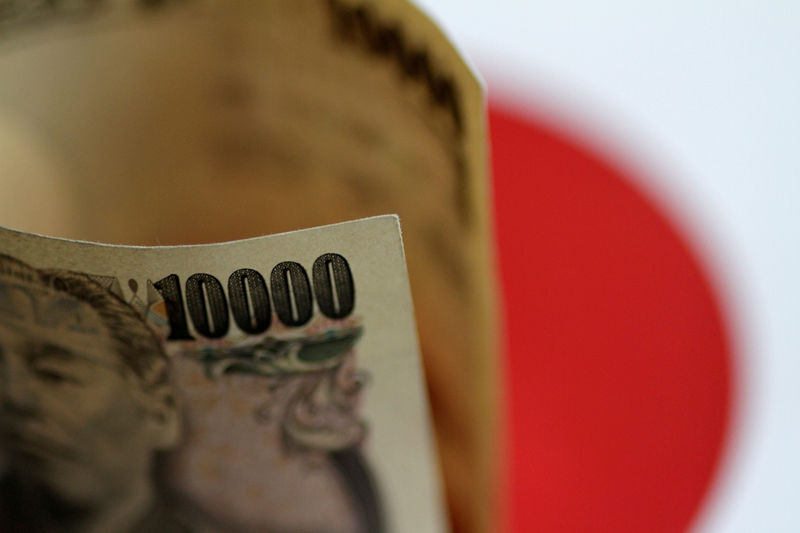Fed’s Powell opens door to potential rate cuts at Jackson Hole
Investing.com -- Most Asian currencies fell on Thursday as the Federal Reserve flagged at least two more interest rate hikes this year after keeping interest rates steady, with the Japanese yen hitting a near seven-month low ahead of a Bank of Japan meeting.
The Fed kept its rates steady on Wednesday, as the central bank takes stock of an over year-long rate hike cycle. But the bank also raised its forecast for peak rates this year to 5.60% from 5.10%, heralding at least two more 25 basis point hikes.
The move pointed to more pressure on regional currencies, as the gap between local and U.S. interest rates widens. This sparked flows into the dollar, with the dollar index and dollar index futures up about 0.3% each as Asian traders pivoted into the greenback.
Rate-sensitive Asian currencies logged the steepest declines, with the South Korean won losing 0.7%, while most Southeast Asian currencies fell about 0.3%.
The Australian dollar was flat, having pared early losses following stronger-than-expected labor market data.
Japanese yen leads Asia losses as focus turns to BOJ
The Japanese yen sank 0.9%, leading losses in Asia despite better-than-expected exports and machinery orders data.
Focus was largely on an upcoming BOJ meeting on Friday, with the central bank expected to maintain its ultra-loose monetary policy as it moves to support local growth. While the trend bodes well for Japanese stocks, the yen is expected to see more selling as rising interest rates in other parts of the world dent the yen’s appeal.
BOJ officials, particularly new Governor Kazuo Ueda, have signaled that they will maintain the bank’s yield curve control policy for the time being, citing a need to support local economic growth.
The yen was also hit by decreased bets that the Japanese government will intervene to stabilize currency markets, as officials issued verbal warnings but carried out no action on the matter.
Chinese yuan slips after more rate cuts, weak economic data
The Chinese yuan fell 0.1%, trading near a six-month low after the People’s Bank of China (PBOC) cut interest rates on its medium-term loans on Thursday.
The move follows a cut in short-term rates earlier this week, and likely heralds a cut in the PBOC’s loan prime rate next week.
The rate cuts come as the Chinese government struggles to shore up a local economic recovery, amid sluggish manufacturing and weak spending.
Data on Thursday furthered this notion, as industrial production, retail sales, and fixed asset investment all missed expectations for May.
